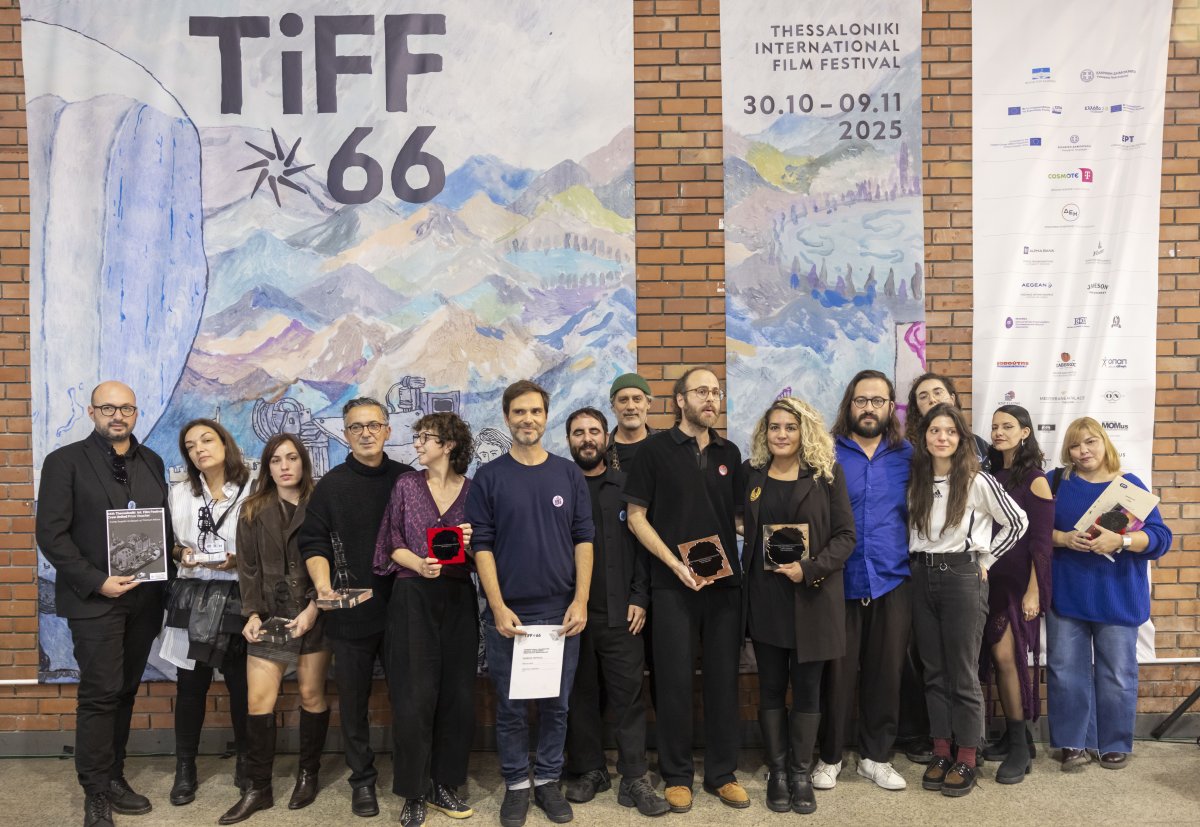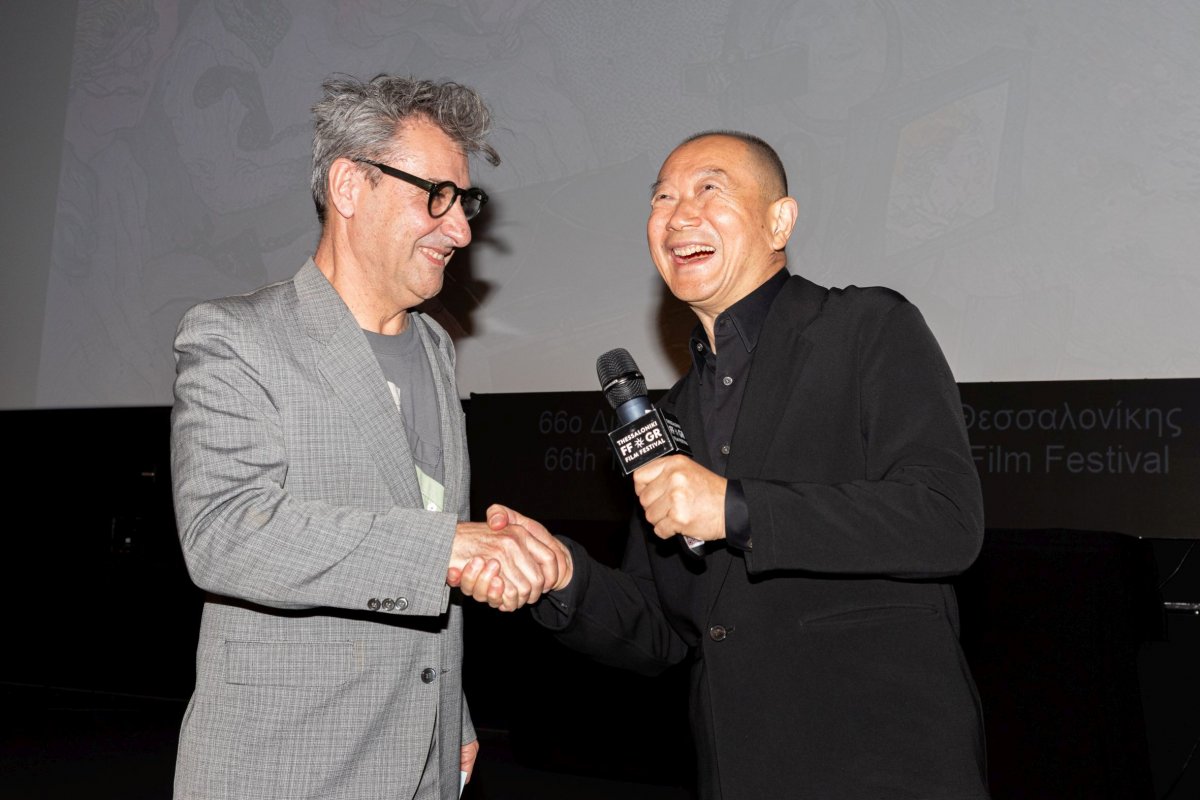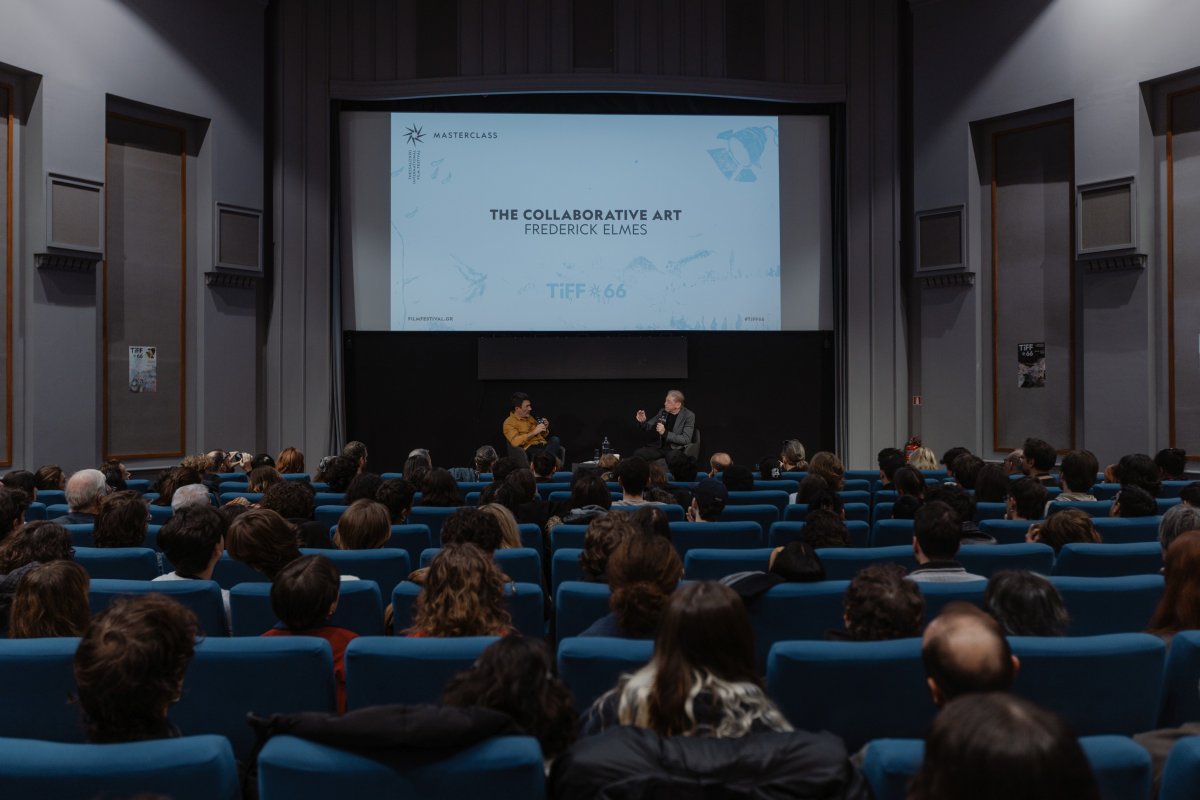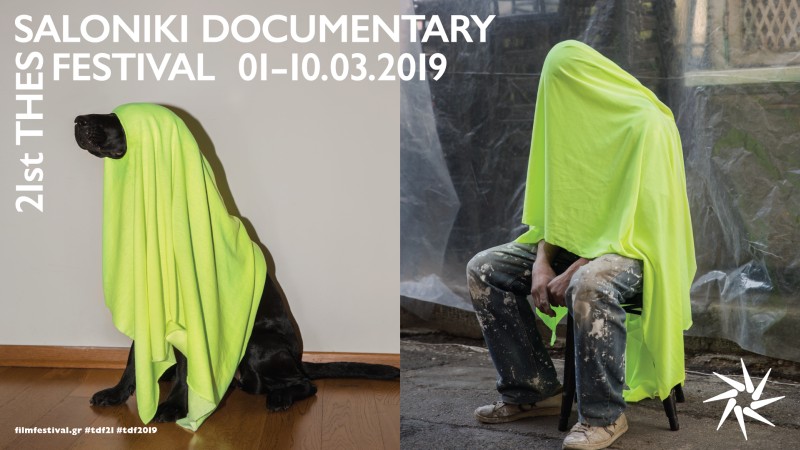Sotiris Kraniotis and Kris Radanov, actors, stunt performers, and stunt coordinators from the STUNT-PROJECT team, gave an exciting and innovative masterclass, titled “Movie Stunts - Introduction to the Exciting World of Cinematic Action” on Monday, November 3rd, at the Pavlos Zannas theater. The engaging discussion, moderated by film director Dimitris Nakos, provided the perfect opportunity for the audience to delve into the technical and artistic dimensions of cinematic stunts, and to understand their pivotal role in cinematic storytelling.
The Festival’s Artistic Director, Orestis Andreadakis, prefaced the discussion, pointing out the huge success of the 100 or so masterclasses that the Thessaloniki Film Festival has put together over the last few years. “The Festival has organized masterclasses on every aspect of cinema, from scriptwriting to directing, editing, and cinematography. However, I think that today's masterclass is the most original one, and certainly the first in Greece to revolve around the work of stunt performers, who so greatly contribute to the magic and wonderful illusion of cinema. For that, we owe them our sincere thanks," Mr. Andreadakis stated.
In parallel, he introduced the discussion’s moderator, Dimitris Nakos, noting that his film Meat had been showcased at the 65th TIFF, where it garnered three awards. “We are very happy that you are here with us today. This is an excellent initiative by the Festival, which has never been done before,” Mr. Nakos stated in turn. Next, he said a few words about Sotiris Kraniotis and Kris Radanov, as well as about the STUNT-PROJECT team they have established, which has been active in Greece for the past 15 years. “For domestic production, they may seem like a luxury, but stunt performers are more than necessary. They can save us from major complications, while also coordinating even the simplest choreography in a scene, which -without them- would lose its authenticity,” he mentioned.
During the discussion, the two successful stuntmen outlined their professional trajectory, getting the audience acquainted with the industry and its specialties. The actor and stunt performer Kris Radanov first took the floor, expressing his delight at seeing the hall packed with so many young people. “I think your generation understands the benefits of a stunt coordinator, thus debunking the myth that an actor or actress can do everything.” In turn, Sotiris Kraniotis thanked the Festival for the invitation: “We are honored to be here in 2025 as guests, to talk about a profession that has been around since the beginning of the last century,” he remarked.
“It’s important to examine how the need to fill a gap on the big screen emerged. Namely, the gap of dangerous scenes,” Mr. Kraniotis explained, as Kris Radanov provided a brief historical overview of the presence of stunt performers in film production while touching on different milestones -from the daring circus performers, who formed the core of the first stunt performers and worked through improvisation, to the westerns of Buster Keaton and John Wayne in the 1950s, which demanded more skills and introduced the matter of safety, and from the visual effects of the 1990s to the creative choreography of scenes that emerged after 2000, with the film series John Wick and Mad Max being some notable examples. “We are delighted that after so many years the Academy Awards will finally honor stunt performers with a new award in 2026,” Kris Radanov noted.
Sotiris Kraniotis then referred to the aspect of stunt execution, explaining the different components that fall under the responsibility of a stunt coordinator: “Stunt coordinators are responsible for designing and coordinating the scenes, as well as putting together the necessary teams, selecting the stunt performers. Therefore, they convey the needs of the script to the production, prioritizing safety, along with the realism that brings the magic of cinema to life. It is necessary, I think, for a stunt coordinator to be part of a project from the outset, because it is the only way for us to know precisely what will happen in a shoot. In the first phase, the stunt coordinator will put together a team -the members required for the combat scenes, along with a coordinator who will design the choreography- in accordance with the script, taking into account both safety and budget considerations. This makes the scenes come to life for the director, while the stunt performers use it as an opportunity to practice,” he stated, and then went on to elaborate that the selection of a stunt performer is never by chance: “You're not just looking for someone who knows martial arts, you want people who are acquainted with cinema and film sets; this is the only way ensure safety,” he said.
“The stunt coordinator collaborates with their own team, the stunt performers, as well as with any other team involved in their work. It is a group effort, designed with precision, aiming at the best possible result both for the camera and the director. With the cast’s safety as a non-negotiable requirement, the important thing for us is to achieve a result that will unfold beautifully over time,” Sotiris Kraniotis explained, stressing that comprehensive knowledge is a key attribute in their industry. As for stunt doubles, Kris Radanov shed light on their importance in feature films: “They may be invisible, but these scenes are made possible thanks to them,” Kris Radanov quipped, highlighting that a crucial part of their work is knowledge of acting and studying the actor they are covering in each instance.
Subsequently, the two speakers touched on the different kinds of stunts, providing video examples. Explaining each process step by step, they stressed that it is difficult for a stunt double to take on multiple roles in a production. “Doing stunts with ropes, for example, is on another level. It is a collaboration between numerous people and a machine, which makes coordination quite demanding. We are forced to do several tests, so that everyone knows exactly what to do on the day of filming,” Sotiris Kraniotis divulged. “Often, even in stunts, one can seek the poetry inherent in the movements rather than the realism,” Kris Radanov expressed. Immediately afterwards, he spoke about the specialized clothing required for stunts involving fire, which necessitates close collaboration with the costume design department, while simultaneously clarifying that it is crucial for a stunt performer to know their limits: “We shouldn't feel like we have to prove anything. We're making a film; other takes will follow,” he mentioned. “Such stunts don’t just happen on demand one day on set. There is an immense amount of work required prior to lighting someone on fire. So that when the time comes, we’ll be able to function like a well-tuned orchestra,” Sotiris Kraniotis added.
“Ensuring what will happen next week on set is invaluable for our work; it greatly affects both the final outcome and safety. I think it goes without saying that we all want to work under such conditions. Similarly, there is a protocol on set. We build up the energy of the shot progressively. In a car chase, we will gradually increase the speed until we achieve the end result. There will be many takes, rehearsals, and corrections, and this requires considerable time,” Sotiris Kraniotis disclosed.
“What you’ve just heard is only a brief introduction to the world of stunts. From action scenes that appear simple to the most meticulously choreographed ones, they all require this expertise,” Dimitris Nakos summarized, before giving the floor to the audience. When asked about doing their own stunts, Kris Radanov said: “It is quite difficult in practice, as it is a huge risk. Tom Cruise does it because he’s also the producer.” Sotiris Kraniotis added: “I want to dispel the myth that certain stars don’t have their own stunt double. Tom Cruise has one of the best stunt doubles in the world at the moment.” As for whether their profession is at risk, Sotiris Kraniotis and Kris Radanov stated: “I don't think the history of cinema has shown such a great danger. CGI, which sparked this debate, is a tool that allows you to do certain things safely, but stunt performers are still needed. It's a merging of the two,” Sotiris Kraniotis commented.
When asked about the stunt coordinators teams and whether production covers the financial cost of preparing the scene, the two renowned stunt performers replied: “We all have a core group of collaborators, but when the demands are greater, the project comprises different people. The conversation about payment is a long one and it starts right here, in our neighborhood, where it is not a given when we talk about pre-production,” Sotiris Kraniotis pointed out, with Kris Radanov adding: “We also support production ourselves because we practice at our own expense. However, production companies should include preparation in the budget,” they concluded.















